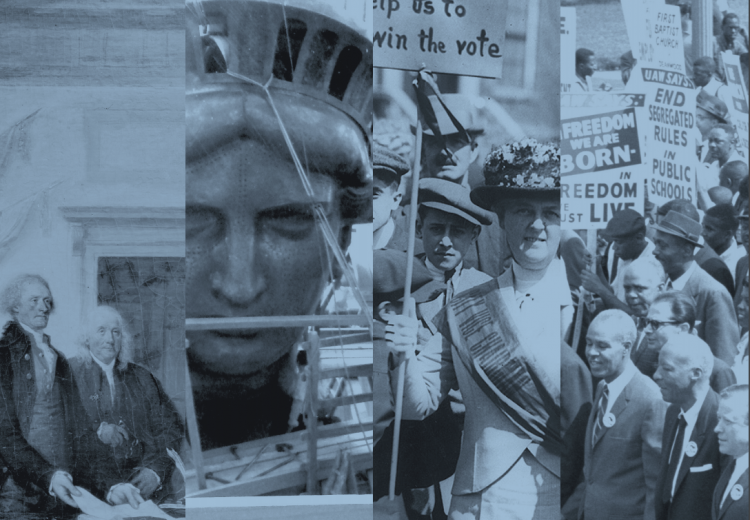Building A More Perfect Union Lesson Book

Building A More Perfect Union
National History Day and the National Endowment for the Humanities
The National Endowment for the Humanities and National History Day created Building a More Perfect Union as part of the NEH’s special initiative to advance civic education and the study of U.S. history and culture in preparation for the 250th anniversary of the signing of the Declaration of Independence.
Looking ahead to 2026, we worked with scholars and teachers across the country to create two essays on the American Revolution and 15 lesson plans for middle school and high school social studies classrooms. These materials explore events, legislative accomplishments, and civic actions throughout U.S. history—from foreign policy to civil rights to debates surrounding citizenship— that collectively moved us toward a more perfect union. Each lesson also includes ideas for how to connect themes and concepts related to a more perfect union to other lesson topics presented in Building a More Perfect Union to support integration across curriculum.
